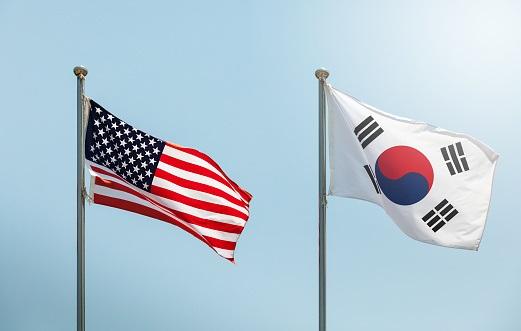Contributing Writer
- FMA
- The Fabricator
- FABTECH
- Canadian Metalworking
Categories
- Additive Manufacturing
- Aluminum Welding
- Arc Welding
- Assembly and Joining
- Automation and Robotics
- Bending and Forming
- Consumables
- Cutting and Weld Prep
- Electric Vehicles
- En Español
- Finishing
- Hydroforming
- Laser Cutting
- Laser Welding
- Machining
- Manufacturing Software
- Materials Handling
- Metals/Materials
- Oxyfuel Cutting
- Plasma Cutting
- Power Tools
- Punching and Other Holemaking
- Roll Forming
- Safety
- Sawing
- Shearing
- Shop Management
- Testing and Measuring
- Tube and Pipe Fabrication
- Tube and Pipe Production
- Waterjet Cutting
Industry Directory
Webcasts
Podcasts
FAB 40
Advertise
Subscribe
Account Login
Search
The real reason South Korea is being targeted
White House aims to help U.S. manufacturers with trade pact renegotiation
- By Stephen Barlas
- September 12, 2017

U.S. Trade Representative Robert Lighthizer is looking to improve the plight of domestic manufacturers as he enters into renegotiations of the U.S.-Korea Trade Agreement.
When U.S. Trade Representative Robert Lighthizer began renegotiations of the 5-year-old U.S.-Korea Trade Agreement, known as KORUS, in mid-August, he had one key objective: Reverse the negative impacts that U.S. manufacturers were experiencing as a result of the original deal.
In the meantime, KORUS has taken on an added layer of political pressure because of North Korea’s ballistic missile tests and bellicose rhetoric. Many are now concerned that President Donald Trump’s threats to pull out of KORUS would undercut South Korea’s defense posture.
One of the key issues underlying Trump’s—and others’—unhappiness with KORUS is its impact on U.S. manufacturers. In 2011, the last full year before KORUS went into effect in March 2012, total U.S. goods exports to Korea were $43.5 billion. Last year U.S. goods exports were $42.3 billion, a decline of 2.7 percent. From 2011 to 2016, the U.S. trade deficit in goods with Korea more than doubled, rising from $13.2 billion to $27.6 billion. The U.S. deficit in the auto sector alone is $24 billion, which is nearly 90 percent of the $27.6 billion goods deficit in 2016.
Besides the deficit in the auto sector, a similar situation exists in other manufacturing sectors. For example, machinery exports to Korea in 2016 were $6.1 billion, and U.S. imports of Korean machinery were $10 billion.
Though the U.S.-Korea trade deficit is the burr under Trump’s saddle, it is also true that manufactured goods exports to Korea have greatly increased over the term of the agreement. Based on U.S. Trade Representative statistics, exports of manufactured goods are up 8.4 percent from 2011 (pre-KORUS) to $37.3 billion in 2015. That was more than twice as fast as the U.S. growth rate in exports of manufactured goods to the world over the same time period. Exports of U.S.-made machinery grew from $6.1 billion to $6.9 billion. Passenger cars increased from $418 million to $1.3 billion.
On Sept. 5 leaders of the House and Senate committees that have oversight authority over trade deals warned the president not to undermine, much less eliminate, KORUS. Senate Finance Committee Chairman Orrin Hatch, R-Utah, ranking member Ron Wyden, D-Ore., House Ways and Means Committee Chairman Kevin Brady, R-Texas, and ranking member Richard Neal, D-Mass., issued this statement: “Our trade relationship can be enhanced and, because KORUS’ operation has presented frustrations for some important U.S. industries and stakeholders, we must press South Korea to improve its implementation and compliance. To be effective and constructive, however, we must not withdraw from the agreement while we do so."
OSHA Eliminates Medical Provisions for Welding in Shipbuilding
The Occupational Safety and Health Administration (OSHA) has proposed eliminating some of the requirements of the beryllium exposure rule, which was finalized in the waning days of the Obama administration.
A permissible exposure standard (PEL) and ancillary provisions, such as personal protective equipment and medical monitoring, were applied to the construction and shipbuilding industries for the first time. There is considerable beryllium exposure in the shipbuilding industry related to welding. Beryllium fumes can form while welding with or on beryllium components.
OSHA is keeping the new PEL for shipbuilding but plans to cancel the medical surveillance, medical removal protection, and other ancillary provisions. The United Steelworkers oppose that move, but are unlikely to sway the administration.
subscribe now

The Fabricator is North America's leading magazine for the metal forming and fabricating industry. The magazine delivers the news, technical articles, and case histories that enable fabricators to do their jobs more efficiently. The Fabricator has served the industry since 1970.
start your free subscriptionAbout the Author

Stephen Barlas
- Stay connected from anywhere

Easily access valuable industry resources now with full access to the digital edition of The Fabricator.

Easily access valuable industry resources now with full access to the digital edition of The Welder.

Easily access valuable industry resources now with full access to the digital edition of The Tube and Pipe Journal.
- Podcasting
- Podcast:
- The Fabricator Podcast
- Published:
- 04/16/2024
- Running Time:
- 63:29
In this episode of The Fabricator Podcast, Caleb Chamberlain, co-founder and CEO of OSH Cut, discusses his company’s...
- Trending Articles
Tips for creating sheet metal tubes with perforations

JM Steel triples capacity for solar energy projects at Pennsylvania facility

Are two heads better than one in fiber laser cutting?

Supporting the metal fabricating industry through FMA

Omco Solar opens second Alabama manufacturing facility

- Industry Events
16th Annual Safety Conference
- April 30 - May 1, 2024
- Elgin,
Pipe and Tube Conference
- May 21 - 22, 2024
- Omaha, NE
World-Class Roll Forming Workshop
- June 5 - 6, 2024
- Louisville, KY
Advanced Laser Application Workshop
- June 25 - 27, 2024
- Novi, MI


























